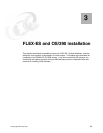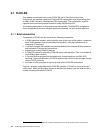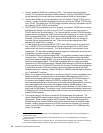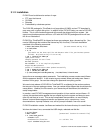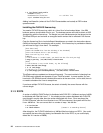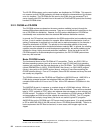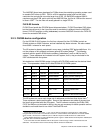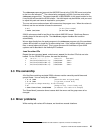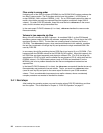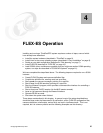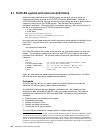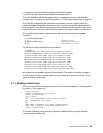
22 S/390 PID: ThinkPad Enabled for S/390
The AD CD-ROM systems, as the name implies, are distributed on CD-ROMs. This aspect is
not common to other OS/390 packaging, but does not affect the characteristics of the system
once it is installed. The CD-ROMs are not seen by the S/390; they are processed
8
by a
server (usually with OS/2, but with Linux in the case of a ThinkPad/EFS system) that routinely
handles CD-ROM drives.
3.2.2 OS/390 on CD-ROM
The CD-ROM versions are based on the same versions available (on tape) through the
standard IBM software distribution processes. There are no modifications involved due to the
use of CD-ROMs for distribution. However, the PID versions distributed on CD-ROM are
considerably more customized than the standard IBM software distribution versions.
In general, the PID versions (once installed on the S/390 system disks) are immediately ready
for use. A set of userids is provided, for example. Minor additional customization (such as
setting IP addresses) is required, but very little work is required compared to, for example, a
ServerPac distribution of OS/390. The penalty for this immediate usability is that many
configuration and customization decisions have been made by IBM. In general, the resulting
systems are quite suitable for a small development organization, but would probably not be
suitable for a large, highly-structured production installation. Since the target for the PID
CD-ROM systems is smaller development organizations, the PID CD-ROM systems have
been very well received.
Basic CD-ROM formats
The fundamental format of the CD-ROMs is PC-compatible. That is, any DOS, OS/2, or
Windows operating systems (and, as far as we know, most PC UNIX and Linux operating
systems) can recognize the files and directories on the CD-ROMs. The CD-ROMs typically
contain README files (in ASCII), P/390 DEVMAP files (binary), an OS/2 UNZIP program
(binary), along with an AIX UNZIP version (binary), and one or more files containing the
OS/390 volumes (binary). From a PC viewpoint, these OS/390 volumes are binary files and
are usually very large files.
The OS/390 volumes (on the CD-ROM) are ZIPed files in AWSCKD format. AWSCKD is a
P/390 device manager program that emulates 3380 and 3390 devices. In general, a
complete 3390 volume is in one or two PC files. All the PID releases of OS/390 are in this
format.
The AWSCKD format is, in essence, a complete image of a S/390 disk volume. Within an
AWSCKD file CKD tracks, cylinders, R0s, and so forth are defined. There will be a standard
label, a VTOC, probably a VTOC index, and whatever data sets appear on that volume in an
OS/390 context. The data is in S/390 format. Text contained on a S/390 volume is EBCDIC
and executables are S/390 binary files suitable for execution by OS/390. To a PC program,
an AWSCKD file is simply a large binary file that is not useful to typical PC programs.
AWSCKD files on the CD-ROM are in ZIP format simply to save space. It is usually possible
to ZIP an AWSCKD 3390-3 (2.8 GB) so that it fits on a CD-ROM (about 600 MB). There is no
basic requirement that ZIP files be used and, in some cases, disk images might not be
zipped.
8
This is true when installing on a P/390, Integrated Server, or Multiprise 3000. The processing consists of UNZIPing
PC files. Each file contains an emulated 3390 disk volume.




